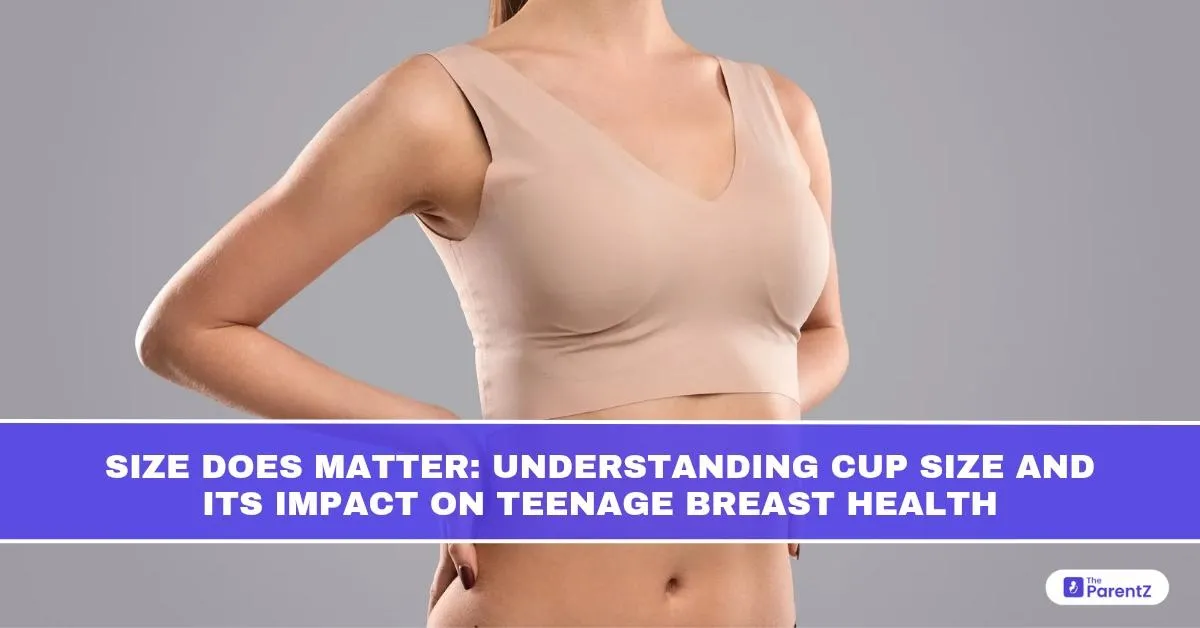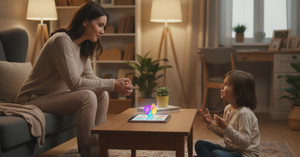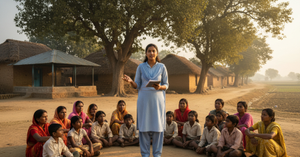Aanya’s Story: What a Bra Label Didn’t Tell Her
Aanya, 15, had been feeling uncomfortable in her own skin for a while. Her shoulders hurt, her chest felt sore, and she often avoided sports or dancing at school. Her mother thought it was just part of growing up. But the real reason? Aanya was wearing the wrong cup size.
This is something many teenage girls go through without even realizing it. The wrong bra size can cause more than just physical discomfort. It can quietly affect how a girl feels about her body, how she moves, and even how she stands.
What Exactly Is “Cup Size”?
Let’s break it down.
A bra size usually has two parts:
- Band size (the number) – This is the measurement around the chest, just under the breasts.
- Cup size (the letter) – This shows how much breast tissue there is. It’s based on the difference between the chest measurement and the fullest part of the bust.
For example, if a girl measures 28 inches under her bust and 30 inches around the fullest part, the difference is 2 inches. That usually means a B cup.
Cup size isn’t just about how “big” someone is; it’s about fit and support. And getting it wrong can affect more than we think.
Why Cup Size Matters for Teen Health
During the teenage years, the body goes through many changes. Breasts grow in size and shape, sometimes quickly. If a bra doesn’t fit well during this time, it can lead to:
- Pain or tenderness: A tight cup can press too hard, while a loose one doesn’t support well. Both can lead to daily discomfort.
- Poor posture: Girls who don’t feel supported often slouch. Over time, this can cause shoulder or back pain.
- Skin issues: Ill-fitting bras may rub against the skin or cause rashes, especially in hot and humid weather.
- Embarrassment: If the bra doesn’t fit right, girls might avoid activities like sports, dancing, or even raising their arms.
- Sagging over time: Breasts are supported by soft tissues. Without proper support, these tissues may stretch, especially during active growth years.
How to Know If the Cup Size Is Wrong
Here are some signs:
- Breasts spilling out of the cups or big gaps in the fabric
- Bra straps digging into the shoulders
- Band riding up at the back
- Constant need to adjust or pull the bra in place
- Marks or redness after wearing the bra
These signs usually mean it’s time for a different size.
Tips for Choosing the Right Cup Size
- Measure every few months: Growth can happen quickly. Taking new measurements at home every 4–6 months is a good idea.
- Comfort first: A bra should feel like a second skin—not something to “get through the day” with.
- Choose soft and simple styles: For beginners, go for cotton, wireless bras, or bralettes. Padding or underwires can come later, only if needed.
- Let her try before buying: Every brand fits a little differently. It’s okay to try different styles to see what feels best.
- Support for active days: Sports bras are a must for running, dancing, or playing sports. They help keep things in place and reduce discomfort.
Common Myths About Cup Size
“Small breasts don’t need support.”
Wrong. All sizes benefit from the right fit and gentle support.
“A bigger size will last longer.”
It may seem smart to size up, but oversized bras don’t offer proper support. They slide around and can feel bulky.
“Training bras don’t have cup sizes, so it doesn’t matter.”
Training bras are fine in the early days, but once breasts begin to develop more, switching to cup-sized bras is healthier.
Support at Home: Make It a Positive Experience
For many girls, shopping for a bra can feel awkward. Some feel shy or unsure. That’s where parents or older sisters can step in with kindness and support.
Helpful ways to approach it:
- Make it part of growing up, not a big deal.
- Go shopping together and let her choose what she likes.
- Talk about comfort, health, and confidence not looks.
- Avoid teasing or comparisons.
- Reassure her that all body shapes and sizes are normal.
In School and Sports
Teachers and activity coaches often notice when girls are wearing the wrong size. A student who keeps adjusting her clothes or avoids movement may just need better support. Yoga and dance teachers also find that girls participate more freely when they feel secure in their clothes.
A well-fitted bra helps girls stand tall, breathe better, and focus on their activities, not on hiding their bodies.
Final Note: Let the Body Grow with Confidence
Wearing the right cup size during the teen years is not just about comfort; it’s part of caring for a growing body. It helps avoid pain, supports good posture, and gives a quiet boost of confidence in school, at play, and beyond.
As parents or mentors, helping a girl find her right fit means helping her feel seen, supported, and strong. After all, the right size gives more than shape, it gives freedom.








Be the first one to comment on this story.